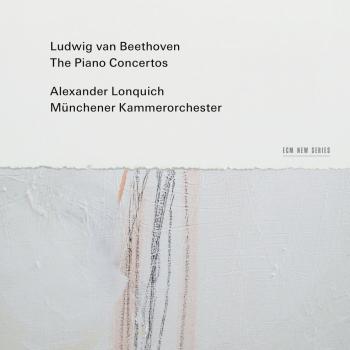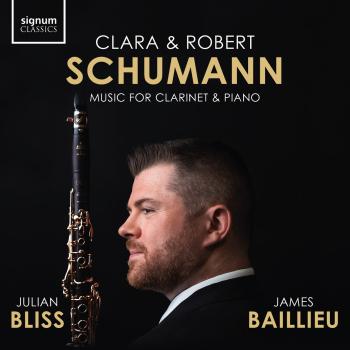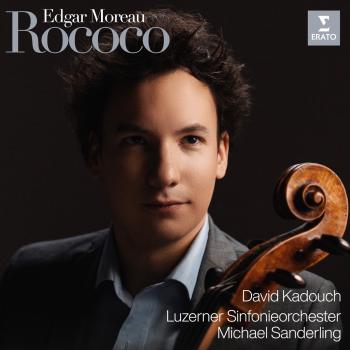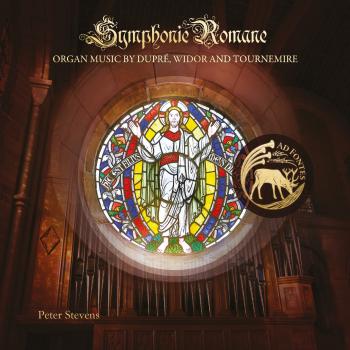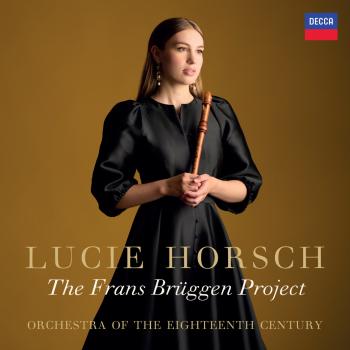
Fachwerk / Silenzio Sofia Gubaidulina
Album info
Album-Release:
2011
HRA-Release:
06.07.2012
Label: Naxos
Genre: Classical
Subgenre: Orchestral
Artist: Sofia Gubaidulina
Composer: Sofia Gubaidulina (1931)
Album including Album cover Booklet (PDF)
- Fachwerk
- 1 Fachwerk 36:12
- Silenzio
- 2 I. quarter note = 96 04:24
- 3 II. double whole note = 42 02:55
- 4 III. quarter note = 56 02:47
- 5 IV. eighth note = 152 01:19
- 6 V. quarter note = 72 07:51
Info for Fachwerk / Silenzio
Sofia Gubaidulinas distinguished career and her 80th anniversary are celebrated with this world première recording of Fachwerk. Recorded here by its acclaimed dedicatee Geir Draugsvoll and in the presence of the composer, this dramatic but also magical work is inspired by a fascination with architectural styles of timber framing. The bayan is a distinctively Russian variant of the accordion and is an essential feature of this piece, also giving a special character to the subtle poetry and textures of Silenzio.
The music of Sofia Gubaidulina, who was born 80 years ago last month (October 2011), is generally exciting, often unpredictable, always fresh. The two pieces on this new recording have all those qualities. They make it one you should certainly get if you're even only remotely interested in her music; or if you want to include novelty and experiment in your listening - particularly to explore the ways in which instruments' particular qualities can be made successfully to convey certain ideas, meet specific compositional aims and evoke specific feelings.
Not that the world première recording in the case of Fachwerk - which was only completed this year - is in any way avant-garde in the conventional sense of the term. It's tonal, developmental melodically, and uses an all but 'regular' string orchestra. Yet the inclusion of the bayan, a distinctively Russian variant of the accordion offers new, subtle and delightful sounds to the listener with open ears.
It would be wrong to suggest that for Gubaidulina texture is everything in this piece. On the other hand, the lush and harmonious, fruity and penetrating combination of sounds from the bayan makes for an intriguing experience. It's a combination of sounds that sits well mid-way between the traditional, almost militaristic, one that evokes Cossack dancing and anything more 'benign'. Yet Gubaidulina does not attempt oddity in sound for oddity's sake. There is purpose and beauty in Fachwerk. It is at times menacing - as towards the end of the piece's 36+ minutes and there are hints of unfinished business - of matters unresolved - throughout yet there is much contrasting gentleness.
It is possible to listen to Fachwerk, which means 'timber framing' without any notion of the allusions with which Gubaidulina is working. Yet to understand that she has buildings so constructed in mind undoubtedly adds a significant dimension. They are buildings where the superstructure is exposed, where nothing is hidden. Indeed, to have succeeded as well as Gubaidulina has in Fachwerk and to expose correspondingly the very 'construction' of the instruments is a remarkable achievement. But it's somehow what the composer has done. The music is geometrical without being sterile. It’s muscular and strong without being monolithic. It is transparent without its sounds dominating the subtle aesthetic. Gubaidulina's intention goes some way towards explaining her choice of the bayan: it can easily alternate between melodic and chordal writing. To have achieved the same thing with a string orchestra and still to have provided purely musical interest for the entire duration is a real feat. Gubaidulina explains in the as usual adequate notes how she uses the dominant, subdominant and tonic. This takes nothing away: there is still nothing mechanical or formulaic in Fachwerk.
Similarly, the five movements of Silenzio, whose titles are distinguished by the designation of a different crotchet value as a metronome marking (from the crotchet = 42 as the second to crotchet = 152 as the fourth) have nothing of the spuriously showy, 'uppity' or ostentatious about them. At the same time the work is full of energy and taut in the extreme. The combination of bayan, violin and cello is as novel as it is successful. Gubaidulina somehow does portray silence. The music seems at all times content to sway and gesture, to hint and diminish.
Less than half the length of Fachwerk, Silenzio nevertheless covers much ground. Its intimacy magically suggests a vaster purview. Equally magically it draws us into it - in large part because the three soloists see no need to overstate the case for a gentle, relaxed and closely nuanced - yet highly expressive - dynamic throughout. Although marked pianissimo, one has the feeling that even were these three players to ignore that, Silenzio would have as much impact as it here does: it is a substantial piece.
The album has a dry and concentrated acoustic. Oddly, this helps our appreciation of the intensity and drive of Gubaidulina's music - even with the need for respectful resonance from the bayan. Furthermore, no one instrument is overbearing or too penetrating, for all the inciting and pointed roles they are asked to play. This is due as much to the skill of the performers as anything. Their first duty is to the unperfumed yet delicate world which Gubaidulina creates and then deftly occupies. They discharge such a duty very well. (Mark Sealey, MusicWeb)
Øyvind Gimse, cello
Anders Loguin, percussion
Geir Inge Lotsberg, violin
Trondheim Symphony Orchestra
Geir Draugsvoll, bayan
Recorded at Kolstad Church, Trondheim, Norway (02/28/2011-03/04/2011)
Anders Loguin
studied percussion at the Royal College of Music in Stockholm, and conducting in Sweden, Finland and the United States. He frequently conducts orchestras and ensembles in Sweden and abroad. He was a founding member of the percussion ensemble! Kroumata, and left the ensemble in 2008, co-founding the ensemble! Glorious Percussion,! which gave the world première of Sofia Gubaidulina’s work of the same name for five percussionists and orchestra.! Loguin participated in the world première concerts of Fachwerk in 2009.!Since 1977 he has been professor and head of the percussion department at the Royal College of Music in Stockholm. Anders Loguin was elected a member of the Royal Swedish Academy of Music in 2002. In 2008 His Majesty the King of Sweden awarded him the royal medal “Litteris et Artibus” for his outstanding contribution to the field of music and art in Sweden and abroad.
Øyvind Gimse
is Artistic Leader of the Trondheim Soloists and a distinguished cellist and orchestral leader.!After studies!with Walter Nothas, Frans Helmerson and! William Pleeth,! he held the position of solo cellist in the! Trondheim Symphony Orchestra for seven years. He has toured as a soloist with!the Trondheim Soloists in Norway, Britain, Italy and Spain. His performances with Anne-Sophie Mutter and the Trondheim Soloists throughout Europe and at the Carnegie Hall in 1999, as well as the recordings with her and the ensemble for DG, have received the highest critical acclaim. In addition his own work as Artistic Leader of the Trondheim Soloists has resulted in the group receiving no less than five GRAMMY® nominations for their last two recordings. In 2004 Gimse joined Sofia Gubaidulina as soloist in her work On the Edge of the Abyss at the Trondheim Chamber Music Festival and during the world première concert performances of Fachwerk with Geir Draugsvoll and the Amsterdam Sinfonietta, he was invited to performe the solo cello part. Since 1997 Gimse has held the position of Professor!of Strings at the Institute for Music (NTNU) in Trondheim. He has also taught elsewhere in Scandinavia, Poland, Vietnam and South Africa. In recent years he has, under the guidance of Jorma Panula, developed his conducting skills as a natural extension of his leadership rôle in the Trondheim Soloists.
Geir Inge Lotsberg
has distinguished himself as one of Norway’s most active chamber musicians. After studies with Leif Jørgensen, Sándor Végh, Camilla Wicks and Ana Chumachenco, he became one of the founding members of the Oslo String Quartet. He is a widely experienced musician with a number of recordings to his credit as a chamber musician!and as a member of ensembles such as the Norwegian Chamber Orchestra and Camerata Salzburg, and as concert-master of the Bergen Philharmonic and Norwegian National Opera orchestras. He has appeared as a soloist with the Oslo Philharmonic, the Norwegian Radio Symphony,!and Camerata Academica Salzburg. Lotsberg is much in demand as a teacher and orchestra leader, working regularly with the Trondheim Soloists and teaching at Barratt Due Music Institute in Oslo.
Trondheim Symphony Orchestra
founded in 1909,!takes its place in the extensive musical heritage of the city of Trondheim. Before the nineteenth century Trondheim was the main focal point for sacred music in Scandinavia. This encouraged many significant musicians of the time to settle there. The growth and expansion of European music culture in the eighteenth and nineteenth centuries was also mirrored within the city. This period saw the foundation of several music societies. The development of the orchestra gained impetus with the jubilee of St Olav in 1930. In more recent times the orchestra has established a solid position in local musical life and that of Norway as a whole. Recent successful tours in Germany, Austria, the Czech Republic and China has enhanced the orchestra’s international reputation. From 2009 the Trondheim Symphony Orchestra has continued its development through closer cooperation with the Trondheim Soloists, resulting in an increased complement of ninety musicians. The Chief Conductor is currently Krzysztof Urbanski.
Geir Draugsvoll
has earned world-wide recognition as one of the most important musicians and pioneers on his instrument, the bayan, with a repertoire ranging from arrangements of music by Bach, Mozart, Grieg and Stravinsky to contemporary classics such as Gubaidulina, Hosokawa, Berio, Nørgaard and Piazzolla. Through collaborations with many composers, he!has given world premières of a large number of works, and works by Sofia Gubaidulina have a particularly prominent place in his concert programmes and discography. The collaboration between Draugsvoll and Gubaidulina culminated in 2009 when he gave the world première of her latest concerto, Fachwerk, which was dedicated to him. Draugsvoll has performed throughout Europe, in the United States, China and Japan, appearing in major concert halls and in festivals, and collaborating with distinguished conductors. His extensive discography includes recordings for EMI, BIS, Simax, Delos, DaCapo, Dreyer-Gaido and many others. Geir Draugsvoll is Norwegian, born at Voss, and studied!in Copenhagen with Mogens Ellegaard. In 1995 he was appointed associate professor at the Royal Academy of Music in Copenhagen, where he now lives.
Sofia Gubaidulina
was born in Chistopol in the Tatar Republic on 24 October 1931. She studied the piano with Grigory Kogan and composition, and graduated from the Kazan Conservatory in 1954. Until 1959 she studied composition at the Moscow Conservatory with Nikolai Peiko, Shostakovich’s assistant, and then did postgraduate work under Vissarion Shebalin. She has been active as a composer since 1963. In 1975, together with Viktor Suslin and Vyacheslav Artyomov, she founded the ‘Astreya’ Ensemble, which specialised in improvising on rare Russian, Caucasian, Central Asian and East Asian folk and ritual instruments. These hitherto unknown sounds and timbres and ways of experiencing musical time had a profound influence on her creative work. Since the early 1980s, and especially as a result of the support and encouragement given to her by Gidon Kremer, her works have been performed widely in western countries. With Schnittke, Denisov and Silvestrov, she is now seen to be one of the leading representatives of the New Music in the former Soviet Union. This is reflected in numerous commissions from the BBC, the Berlin Festival, the Library of Congress, NHK, the New York Philharmonic and other institutions, and in the availability of a large number of recordings. Sofia Gubaidulina is a member of the Akademie der Künste in Berlin, of the Freie Akademie der Künste in Hamburg, of the Royal Music Academy in Stockholm and of the German order “Pour le mérite”. In 1992 Gubaidulina moved to Germany, and now lives near Hamburg.
Booklet for Fachwerk / Silenzio


